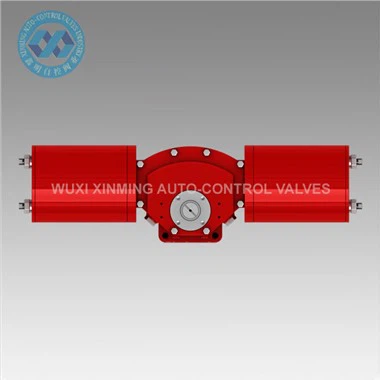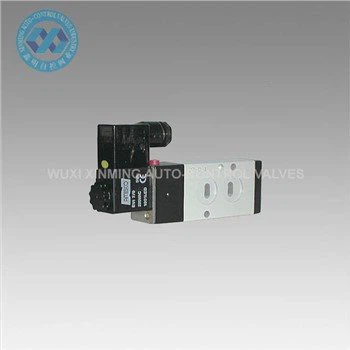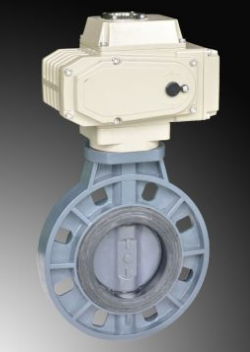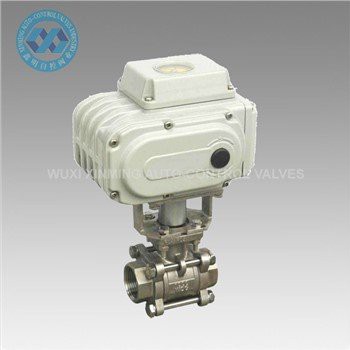Introduction
Air actuators are mechanical devices that use compressed air to produce motion, enabling the automation of valves, gates, dampers, and other equipment. They are a core component in industrial automation systems due to their speed, reliability, and safety in explosive environments.
This article will cover the definition, types, working principles, advantages, and applications of air actuators, helping you understand why they remain one of the most efficient actuation solutions in modern industries.
What is an Air Actuator?
An air actuator (also called a pneumatic actuator) converts the energy from compressed air into mechanical motion — either linear or rotary. This motion is then used to operate mechanical systems such as valves, conveyors, and machine tools.
Key Characteristics:
-
Powered by compressed air (usually between 80–120 psi)
-
Capable of high-speed actuation
-
Available in various designs to suit different applications
-
Safe for hazardous environments where electrical sparks are dangerous
Working Principle of Air Actuators
The operation of an air actuator can be summarized in the following steps:
-
Air Supply – Compressed air enters the actuator chamber through a control valve.
-
Pressure Build-Up – The air pressure acts against a piston or vane.
-
Motion Generation – This force moves the piston (for linear actuators) or rotates a vane/gear (for rotary actuators).
-
Output Force Transmission – The movement is transferred to the connected mechanism, such as a valve stem or lever.
-
Air Exhaust – Air exits the chamber through exhaust ports when the actuator returns to its initial position.
Types of Air Actuators
Air actuators can be classified based on motion type and actuation method.
1. Linear Air Actuators
-
Provide straight-line motion.
-
Commonly used for lifting, pushing, pulling, or controlling linear valve types.
-
Examples: rod-style pneumatic cylinders, rodless cylinders.
2. Rotary Air Actuators
-
Deliver rotational motion.
-
Used in quarter-turn valves (butterfly, ball valves) and mechanical arms.
-
Types:
-
Rack and Pinion – Converts piston movement into rotation.
-
Vane Type – Uses a rotating vane in a sealed housing.
-
3. Single-Acting Air Actuators
-
Air pressure is used for motion in one direction, with a spring return.
-
Ideal for fail-safe operations.
4. Double-Acting Air Actuators
-
Air pressure moves the actuator in both directions.
-
Offers greater control and is suited for high-cycle applications.
Advantages of Air Actuators
-
Fast Response – Can fully actuate in less than a second.
-
Durability – Withstands harsh operating environments.
-
Safety – No electrical sparks, suitable for explosive atmospheres.
-
Cost-Effective – Compressed air is affordable and widely available.
-
Low Maintenance – Fewer moving parts compared to electric systems.
Industrial Applications of Air Actuators
Air actuators are essential in many industries, including:
-
Oil & Gas – Automating control valves in pipelines and offshore rigs.
-
Water Treatment – Managing gates and valves in purification systems.
-
Food & Beverage – Sanitary valve control in processing plants.
-
Chemical Processing – Handling corrosive or hazardous materials.
-
Manufacturing – Driving automated machinery and assembly lines.
-
HVAC Systems – Controlling air dampers and ventilation flow.
Factors to Consider When Choosing an Air Actuator
When selecting the right actuator for your application, evaluate:
-
Required Torque or Force
-
Operating Pressure Range
-
Valve or Mechanism Type
-
Cycle Frequency
-
Environmental Conditions
-
Material Compatibility (e.g., stainless steel for corrosive processes)
Maintenance Tips
-
Check for air leaks in supply lines regularly.
-
Inspect actuator seals for wear to maintain efficiency.
-
Lubricate moving components when required.
-
Test actuator performance to ensure consistent operation.
Conclusion
Air actuators are a proven, reliable, and cost-effective solution for automating mechanical systems across a wide range of industries. Their fast operation, safety in hazardous environments, and low maintenance needs make them a preferred choice over electric or hydraulic options in many applications.
If you want to learn more about low-priced products, please visit the following website: www.xm-valveactuator.com















